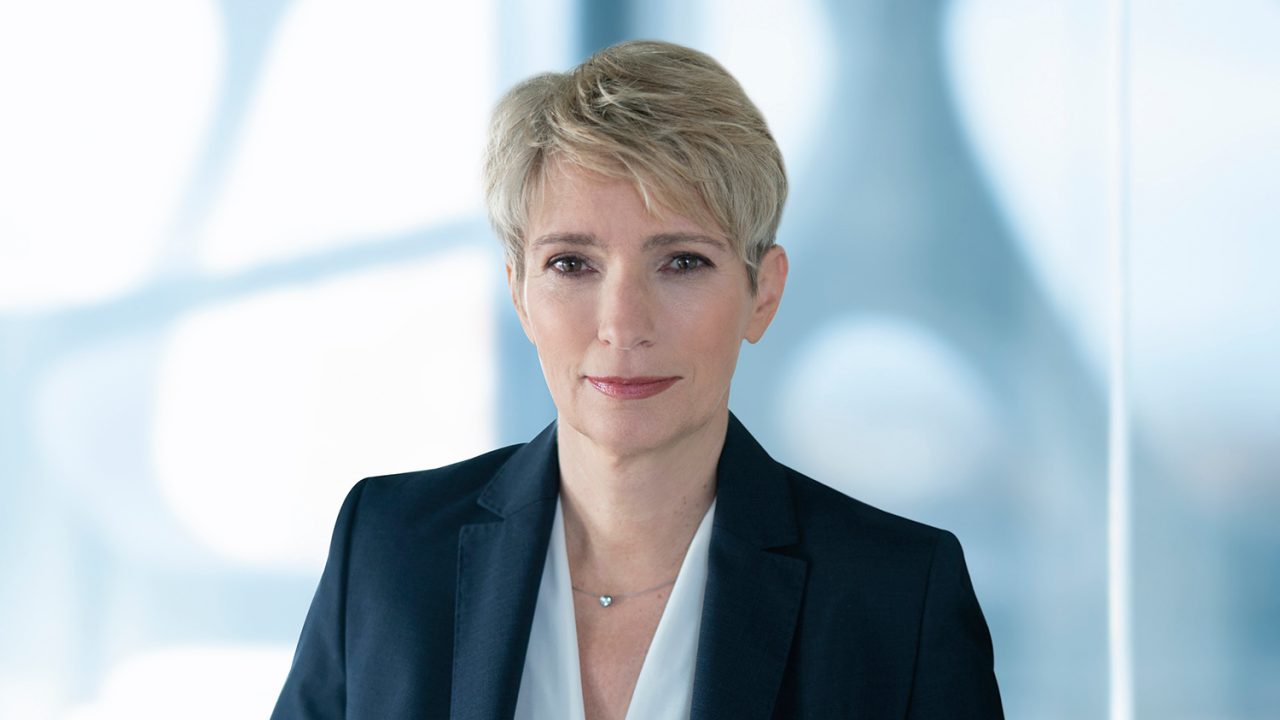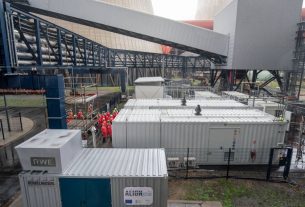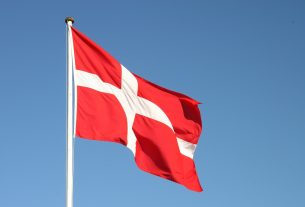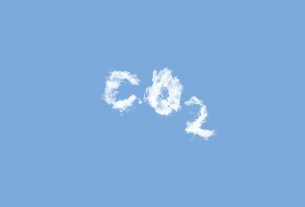Germany – Many solutions are needed to make chemical production sites CO2-neutral, says Melanie Maas-Brunner, CTO of BASF. And a lot of cooperation too. According to her, the chemical giant’s Antwerp site will be the first BASF Verbund site in Europe to be completely transformed. Its location offers unique opportunities for the use of offshore wind and large-scale storage of CO2. Maas-Brunner is key talker at the opening of EIES2021 on December 7th.
In 2021, BASF’s announcements followed each other rapidly. In March, CEO Martin Brudermüller announced that the chemical group wants to be CO2 neutral by 2050. For 2030 it already wants to reduce global greenhouse gas emissions by 25 percent compared to 2018. ‘For now, the 2030 target is the most important. That is really very soon,’ states chief technology officer Melanie Maas-Brunner. ‘In doing so, we can’t commit to one technology. Think of it as a puzzle with many pieces. We need a whole toolbox of solutions.’
Right direction
In the spring, the German chemical giant already became more concrete. In May, BASF and energy company RWE presented a huge plan for a two gigawatt offshore wind farm in the German part of the North Sea. With this, the partners want to supply the chemical site in Ludwigshafen with green electricity, which should replace the use of fossil fuels. Also, a three hundred megawatt electrolyzer is to enable the production of green hydrogen. The plans of RWE and BASF involve a total investment of four billion euros.
Parts of the BASF factories, such as heat pumps, will increasingly be driven electrically. And it is also being tackled on a larger scale. For example, BASF is developing electrically heated steam-crackers together with Sabic and Linde..
But that’s not all. The wind power must first be brought on land, Maas-Brunner argues. And in order to electrify BASF’s enormous site in Ludwigshafen, the electricity grid around the cluster will have to be massively reinforced. This will require many more parties than just BASF and RWE. ‘Who is going to invest in the grid? And what does that mean for the price of electricity that we have to pay? In the US and China, it’s easier to get affordable renewable power than here. To compete, it will have to be four to five cents per kilowatt hour. In that light, by the way, the new German coalition agreement is hopeful. And the European Union also seems to be moving in the right direction.’
More bureaucratic
A month later, in June, another major announcement followed. BASF reached an agreement with energy company Vattenfall to purchase 49.5 percent of the Dutch offshore wind farm Hollandse Kust Zuid. Construction of the wind farm began last summer and is expected to be fully operational in 2023. It will then be the largest offshore wind farm in the world with 140 wind turbines and a total installed capacity of 1.5 Gigawatts.
BASF will use its share of electricity to support chemical production at sites across Europe. In doing so, BASF’s production site in Antwerp will benefit the most from the renewable energy.
Melanie Maas-Brunner, who is also responsible for Antwerp on the Board of BASF, says that the site will become the frontrunner in Europe. ‘Antwerp will be the first European Verbund site to become CO2 neutral. Probably not of the world, because then China seems to have a head start.’
In the southern province of Guangdong, BASF started building a new large production site two years ago. An investment of no less than ten billion dollars. With new construction, it is in any case easier to take major sustainable steps. And the Chinese government is also very cooperative, Maas-Brunner argues. For example, in the construction of good infrastructure for renewable energy. ‘This enables us to take bigger steps than in Europe, which is more bureaucratic in this area.’
CO2 price
Antwerp has geographical advantages in Europe. It is situated close to the North Sea and is therefore easier to open up for wind energy. And that also offers opportunities for Carbon Capture and Storage (CCS) in the shorter term.
Very recently, it was announced that Air Liquide and BASF are going to capture and store the CO2 from five BASF plants in Antwerp together. The joint project is called Kairos@C and has been selected for funding by the European Commission through its Innovation Fund. If the project goes ahead, it should be operational by 2025. The two companies expect to avoid 14.2 million tons of CO2 in the first ten years of capture and storage. The two partners envision CO2 storage in the North Sea. The two partners also want to design vessels in which liquid CO2 can be stored for transport. So that it can also be given a second life as a chemical building block.
Clearly, Antwerp has advantages in terms of wind energy and CCS over a inland site like Ludwigshafen. Yet Maas-Brunner also sees plenty of opportunities there. Some in the somewhat longer term. If the CO2 price continues to rise, there will come a time when it becomes economically interesting to capture CO2 on a large scale in Ludwigshafen and to transport it, for example in boats via the Rhine.
Carbon black
She does recognize, however, the analysis that inland chemical locations are more concerned with preventing CO2 emissions than industrial seaports, that are better situated for CCS. An interesting development in this respect is methane pyrolysis, or the production of turquoise hydrogen. Via this – somewhat underexposed – route, emission-free hydrogen can be produced from natural gas or biogas, with carbon black as a second interesting product. A pilot reactor has already been built for this purpose in Ludwigshafen. It already produces hydrogen and carbon black. ‘We are now working on many details. How can we make this a stable continuous process? How do we manage heat distribution in the reactor? How do we close the loops? A highly motivated team is currently working on this. Commercial production should be possible in 2030 and we hope even sooner. In any case, the next step is the construction of an even larger pilot installation.’
The advantage of this turquoise route is that it requires much less electricity than the green route. ‘For methane pyrolysis, only 20 percent of the amount is needed compared to electrolysis of water.’ The supply of large quantities of natural gas is also not a huge stumbling block. Maas-Brunner: ‘And of course it’s even better if we can increasingly replace natural gas with biogas. Then we can even think about negative emissions.’
A lot of attention is also being paid to the possibilities of carbon black. Pure carbon is already being used on a large scale as a dye, for example. And think of electrodes in batteries. This is a growing market, partly due to the rise of electric cars. Carbon also offers possibilities as a soil improver.
Dialogue
Maas-Brunner does not rule out that BASF will seek to approach existing carbon black producers in this field. As with the various initiatives announced last year. ‘Of course, as a large and diverse chemical company, we want to play an important role in the transition. And we can do that in various areas. But we need a lot of partners in order to do so. The changes that are required are far too big for one company. A lot of cooperation is needed and, above all, an open mind. As far as we are concerned, the dialogue has started for a while.’
EIES2021
The plenary opening of the European Industry & Energy Summit 2021 promises fireworks once again. Keynote speeches by Melanie Maas-Brunner, Holger Kreetz, COO of Uniper, Hans van den Berg, CEO Tata Steel Netherlands and Professor Bert Weckhuysen of Utrecht University set the tone for the central theme: the role of industry in the energy transition.





